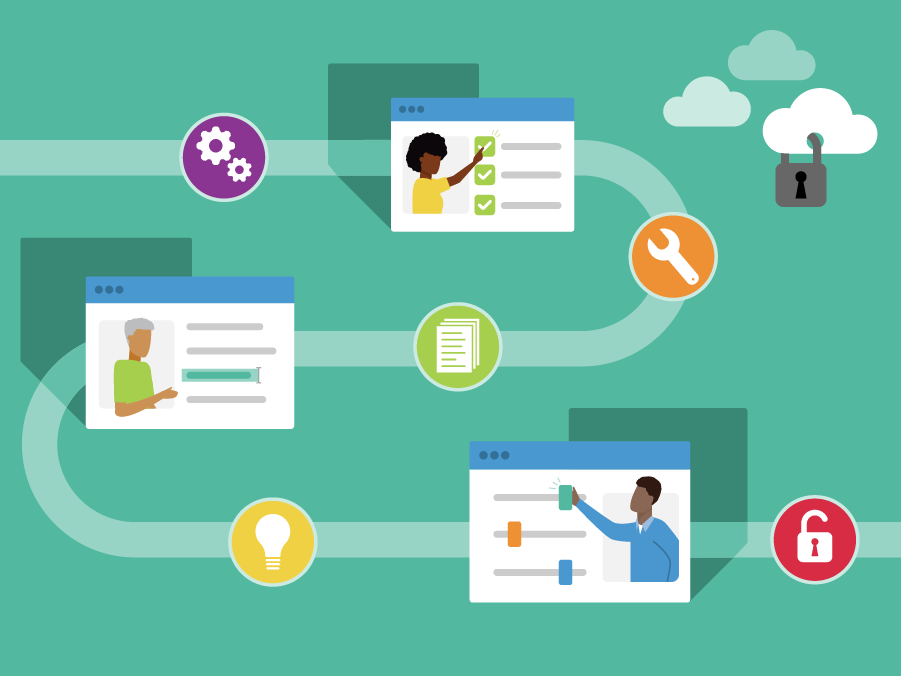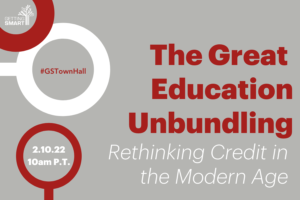How to Ensure Learning and Employment Records are Designed With and For Learners
Key Points
-
Learn about the importance of inclusion in the design of LER technologies.
-
Here are 5 key questions to ask of LER vendors, to help learners, educators and administrators in their evaluation of LER vendors and platforms for learner benefits.

By: Kelly Page, Sierra Noakes, and Sarah Cacicio
Be it with resumes, college applications, portfolios to online career profiles on websites like LinkedIn or Indeed, we’ve long struggled to demonstrate the whole and varied experience of a learner or worker, as they travel the path that most interests, supports, or is available to them. Developing skills and collecting experiences through formal and informal education, volunteer work, extracurricular activities, social and cultural interests or artistic pursuits, to employment work experience, no two learners experience the same path. Increasingly, evidence demonstrates that many workplace and career pathways are non-linear, non-”traditional,” and follow more of a network-type model of development, especially for learners who are often marginalized in education and workforce systems.
This problem has had educators, learning scientists, administrators, and technologists working to design systems which better serve people in collecting, storing, verifying, and showcasing the diversity of skills, competencies, and interest-based assets collected throughout a lifetime. What has emerged is a suite of technologies forming a system called Learning and Employment Records (LERs), often referred to as Comprehensive Learner Records (CLRs), digital wallets, or verifiable credential wallets).
LERs display comprehensive digital records of an individual’s skills, competencies, credentials, and employment history that may present a more complete picture of education and work experiences. Depending on their design, they may have the features and functionality to strengthen or reinvent resumes by including data that has been verified, updated over time, is permanent in their LER, and can be shared across data systems with different parties when and if needed.
If designed for inclusion, they may contain more than an academic transcript, and also include noncredit experiences, co-curriculars, professional and continuing learning events, and other important milestones in a learner’s life. If designed for self-sovereignty, or learner agency, learners will also have increased control over their learning and identity data. In this, an LER may serve to empower learners in what and with whom they share, and reshape higher education systems by better acknowledging learning that happens inside and outside of formal schooling.
Despite the immense benefits, there are many hurdles to overcome. Institutions will need to adopt a more comprehensive approach to learning data and information system management and engage in data literacy education. Developers will need to include learners and earners, and education providers—who are often absent stakeholder voices in data and information systems design—as codesigners in the development of LERs.
More LERs on the market does not mean greater equity or access and use for learners.
Kelly Page, Sierra Noakes, and Sarah Cacicio
LER pilot programs are expanding across higher education institutions, the U.S.Department of Defense, as well as large-scale employers. Yet, more LERs on the market does not mean greater equity or access and use for learners. As more LERs enter the market, LER end-users—including learners and the education providers and employers that support them—will need to find ways to evaluate the available LER platforms and determine which technology best aligns to their needs.
Digital Promise is working to address issues of LER access and inclusion in a series of projects. Recently, we collaborated with workers in frontline sectors along with leaders in higher education, design, and technology to generate a set of Inclusive Design Principles and user profiles for LERs aimed at surfacing the needs of end-users. Today, we are working to create Product Certifications for LER vendors focused on Inclusive Design and Learning Transitions. These certifications will help those who will ultimately leverage LERs to identify vendors that have demonstrated they have been designed in alignment with criteria that matter most to learners and workers.
[Insert Video: Toward Inclusive Design: Informing the Development of Learning and Employment Records (LERs)]
While LERs are still emerging and not yet widely available, some questions have emerged that may support learners, educators and administrators in their evaluation of LER vendors and platforms for learner benefit:.
- How do learners control the information that is collected, stored in, and shared from an LER?
- How can learners trust that their information is safe and their privacy concerns are addressed?
- Are individuals able to share learning events and progress beyond just degree completion?
- How does the LER allow individuals to collect, store, and share their skills and competencies across learning experiences, especially non-credit events and diverse pathways?
- Were learners involved in the design and development of the LER and does the LER vendor have user profiles or use cases to provide additional context?
LERs have the potential to dramatically change the landscape of learning and work, if and only if they’re developed with learners and workers, and designed for the inclusion of diverse pathways and the self-sovereignty of a learner’s identity.
Kelly Page is the Director of Learning and Employment Innovations at Digital Promise.
Sierra Noakes is the Marketplace Project Director at Digital Promise.
Sarah Cacicio is the Director of Adult Learning at Digital Promise.







0 Comments
Leave a Comment
Your email address will not be published. All fields are required.